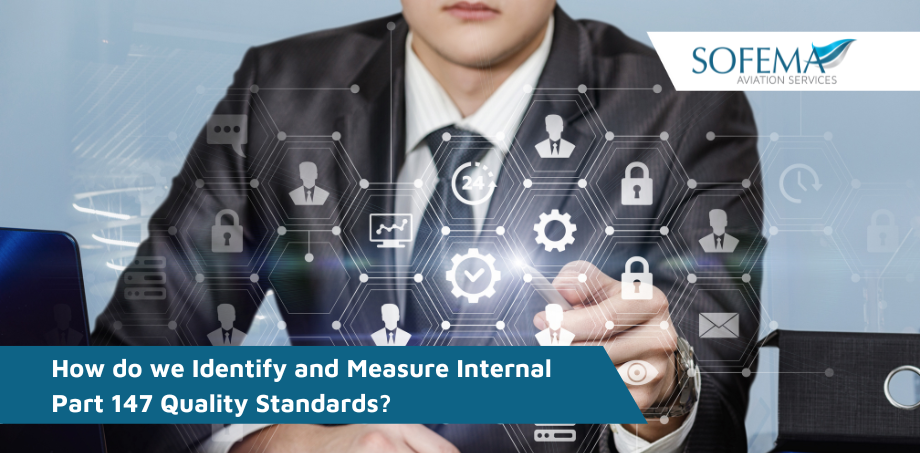Sofema Aviation Services (SAS) www.sassofia.com considers the process to determine EASA Part 147 Compliance
Introduction – How do we Identify and Measure our Internal Part 147 Quality Standards?
We use standards as a reference point or benchmark by which we can measure what we are doing to ensure it fully meets expectations.
Standards are derived from regulatory requirements related to EASA Implementing Rules (IR), Acceptable Means of Compliance (AMC ) & Guidance Material thus providing a basis for monitoring, inspection, and evaluation.
Note – It is also possible and indeed beneficial for standards to also be developed to meet Part 147 Training Procedure Requirements (internal objectives).
- Standards sit hand in hand with the organisation’s process and procedure and enable a more detailed assessment of compliance with the organisation’s business process objectives and expectations.
- As we know the role of QA is to independently assess the process procedures and product to determine that the organisation is fully in compliance.
- We should also understand that from a practical point of view because quality standards are directly related to organisational policy, the standards need “ownership”.
- Consider that whilst the standards exist within the Quality Assurance Department, they do in fact impact the business area owners in a significant way.
- Therefore standards related to compliance with the regulation must be taken as a “given” whereas standards related to organisation best practices must be agreed upon and accepted within the business area.
Quality Assurance (QA) is essentially focused on the need to provide confidence that all quality requirements (QC related) are fulfilled.
3 Steps for effective delivery of an EASA Part 147 Quality Assurance Audit
Step 1 is to fully understand the standard or requirement, which we are auditing against.
- If it is a regulation – what is the current issue (are there any changes due – check for Notice of Proposed Amendments) the more background knowledge the better able you are to make good audit decisions.
- If it is an internal process or Procedure – who is the owner or responsible person (do they know that you are going to be auditing their procedure)? It is good business manners to inform them – again take the opportunity to ask if there are any planned changes to the procedure or process.
Always taking the opportunity to ask open questions, which will aid and benefit the understanding of the background related to the audit subject matter.
Step 2 – Develop a checklist which will be used in support of the audit
- Always remember that the checklist should be treated as an aid “memoire” do not become a checklist slave!
Step 3 – Techniques which contribute to an effective audit are:
- Interviews or discussions with personnel;
Learning how to communicate effectively during an audit is an acquired skill, learning how to ask open questions and help the auditee to develop comprehensive replies. (this is where we can gain leverage and value during the audit) - Review all published documents against the known standards – what are you looking for? – essentially consistency and of course “gaps” if there are any – but remember the rationale of the audit is not to look for problems but to validate conformity.
Check and examine an “adequate” sample of records! – note the use of a word which is very subjective – what does it mean? what does sufficient mean? – Deal with it in the context of the size and scope of the audit. - Witnessing of the activities which make up the operation; The more confidence in the correct following of the process and the procedures the better – but note that we want to avoid a “pony show” where the auditee puts on a special show just for us with the most experienced persons being present for the “audit” – means what you are seeing is far from Normal.
- Recording of Observations – We need to record what we are looking at so that we can make reference to it later – also if there any anomalies we must clearly identify why there is a discrepancy so that we can act on it.
Next Steps
Follow this link to our Library to find & Download related documents for Free.
Sofema Aviation Services (www.sassofia.com) and Sofema Online (www.sofemaonline.com) provide classroom, webinar, and online EASA-compliant regulatory & vocational training. Please see the websites or email team@sassofia.com for more details.
Tags:
Quality Assurance, Quality Auditing, Guidance Material, EASA Part 147, Acceptable Means of Compliance, SAS training, SOL Training, Quality standards, Part 147 Compliance, EASA Implementing Rules, Training Procedure





